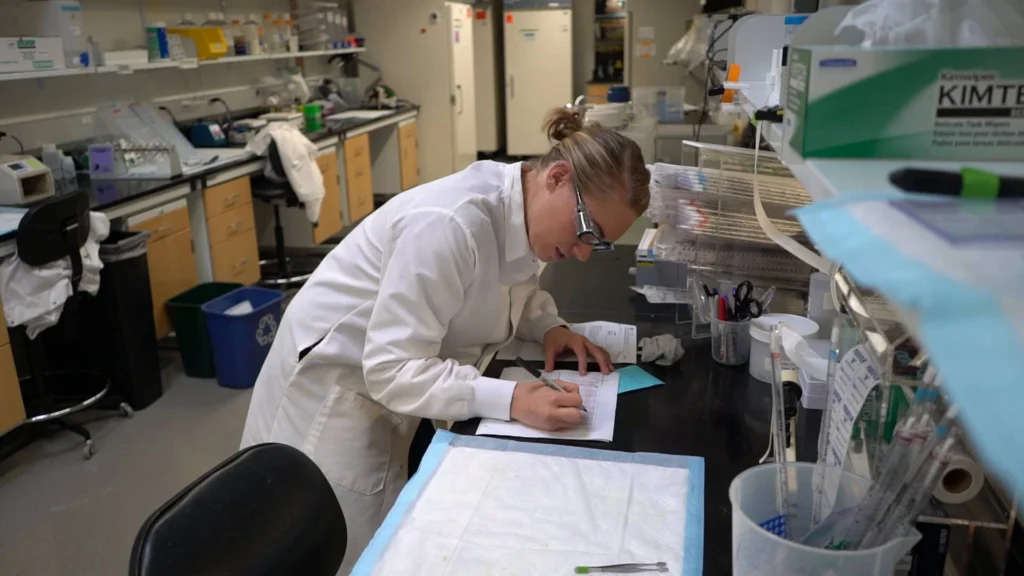
Cell signaling is the intricate system of communication that governs fundamental activities in all living organisms. From coordinating cellular functions to regulating growth and development, signaling pathways are essential for life. In recent decades, cell signaling technology has advanced rapidly, becoming a cornerstone of research in fields such as oncology, immunotherapy, and neurobiology. This article delves deep into the various components of cell signaling, explores groundbreaking innovations, and highlights the real-world applications of these technologies in science and medicine.
What is Cell Signaling?
Cell signaling refers to the process by which cells communicate with each other through chemical signals. These signals are often transmitted via ligands (e.g., hormones, neurotransmitters) that bind to specific receptors on a target cell. Once a ligand attaches to its receptor, it triggers a chain reaction of events inside the cell called a signaling cascade. This results in the activation or inhibition of certain cellular functions, such as gene expression, cell growth, or apoptosis.
Why is Cell Signaling Important?
The accurate transmission of signals ensures that cells respond appropriately to environmental cues, maintaining balance within tissues and organs. Problems with signaling can cause diseases like cancer, diabetes, and autoimmune disorders. Thus, studying cell signaling is crucial for understanding the onset of diseases and developing therapeutic interventions.
Types of Cell Signaling
Cell signaling can be classified based on the distance over which the signaling molecules act. The major types include:
1. Endocrine Signaling
Endocrine signaling involves hormones that are secreted by endocrine glands and travel through the bloodstream to distant target cells. These long-range signals are involved in processes like metabolism, growth, and reproduction. For example, insulin is a hormone that regulates glucose levels in the blood.
2. Paracrine Signaling
In paracrine signaling, cells release signals that affect nearby cells within the same tissue. Growth factors, for example, often work in this manner, playing critical roles in wound healing and development.
3. Autocrine Signaling
Autocrine signaling happens when a cell releases a molecule that binds to receptors on itself. This is common in immune cells and some cancer cells, enabling them to regulate their own growth and survival.
4. Neuronal Signaling
Neuronal signaling is rapid, long-distance communication facilitated by neurotransmitters across synapses. This type of signaling is crucial for the transmission of nerve impulses, enabling the coordination of reflexes and voluntary movements.
5. Juxtacrine Signaling
This form of signaling occurs through direct physical contact between adjacent cells. It is essential for maintaining tissue structure and coordinating immune responses.

Key Components of Cell Signaling Pathways
Cell signaling pathways consist of several important components that work in unison to ensure the correct transmission of signals. These include:
1. Receptors
Receptors are special proteins on or inside cells that detect and respond to signaling molecules. These can be G protein-coupled receptors (GPCRs), tyrosine kinase receptors, or ion channel receptors. Once activated, these receptors initiate a cascade of intracellular events.
2. Second Messengers
Once a receptor is activated, it triggers the release of small molecules known as second messengers, such as cyclic AMP (cAMP) or calcium ions (Ca2+). These molecules boost and spread the signal throughout the cell.
3. Protein Kinases
Protein kinases, like Akt and mTOR, play a crucial role in many signaling pathways by phosphorylating target proteins, which activates or deactivates specific cellular functions.
4. Transcription Factors
Signaling pathways often aim to control gene expression, with transcription factors acting as proteins that switch genes on or off by binding to specific DNA sequences.
Applications of Cell Signaling Technology in Research
Cell signaling research has vast applications in modern science, especially in understanding disease mechanisms and developing new therapies.
1. Cancer Research
Many cancers are caused by mutations in genes that regulate signaling pathways, leading to uncontrolled cell growth. One example is the Phospho-Akt signaling pathway, which is frequently dysregulated in cancers like breast, lung, and prostate cancer. Researchers use signaling technologies to identify targets for therapeutic intervention, such as inhibiting specific kinases that drive tumor growth.
2. Immunotherapy
The immune system relies heavily on cell signaling for recognizing and attacking pathogens. CAR-T cell therapy, which is a revolutionary treatment for certain types of cancer, involves modifying T-cells to better recognize and attack cancer cells. This technology is based on manipulating signaling pathways that govern T-cell function.
3. Neuroscience
Cell signaling is essential for brain function, particularly in the transmission of signals between neurons. Disruptions in neuronal signaling pathways have been implicated in neurodegenerative diseases such as Alzheimer’s and Parkinson’s. Research into these pathways is leading to new treatments aimed at restoring normal brain function.
4. Developmental Biology
During embryonic development, cells communicate extensively to ensure proper tissue formation. Researchers study signaling pathways like the Wnt and Hedgehog pathways to understand how cells differentiate and form tissues during development.

Innovations in Cell Signaling Technology
Recent technological advancements have significantly advanced cell signaling research. Several innovative approaches have emerged:
1. Chromatin Profiling
Chromatin profiling allows researchers to study interactions between chromatin (the material that makes up chromosomes) and signaling pathways. This is particularly important in understanding how gene expression is regulated during cellular responses to environmental signals.
2. Multiplexing with SignalStar™
The SignalStar™ Multiplex IHC technology enables researchers to study multiple signaling events simultaneously in a single tissue sample. This is highly beneficial in spatial biology, where understanding the cellular microenvironment is critical.
3. Custom Antibody Development
Advances in custom antibody conjugation services have revolutionized how researchers study specific proteins in signaling pathways. For example, Cell Signaling Technology (CST) offers customized antibody solutions for precise research needs.
Challenges and Future Directions in Cell Signaling Research
While significant progress has been made, several challenges remain in the field of cell signaling. One big challenge is the complexity of signaling networks. Signaling pathways do not act in isolation; they are part of intricate networks that cross-talk with each other. Understanding how these networks are regulated in health and disease is crucial for developing targeted therapies.
Another challenge is the need for more precision in targeting specific pathways. While therapies targeting certain signaling molecules have shown promise, unintended side effects often occur due to off-target effects. Thus, improving the specificity of these therapies is a major area of research.
Looking forward, technological advancements such as artificial intelligence (AI) and machine learning are expected to play a key role in analyzing complex signaling data, leading to more personalized and effective treatments.







